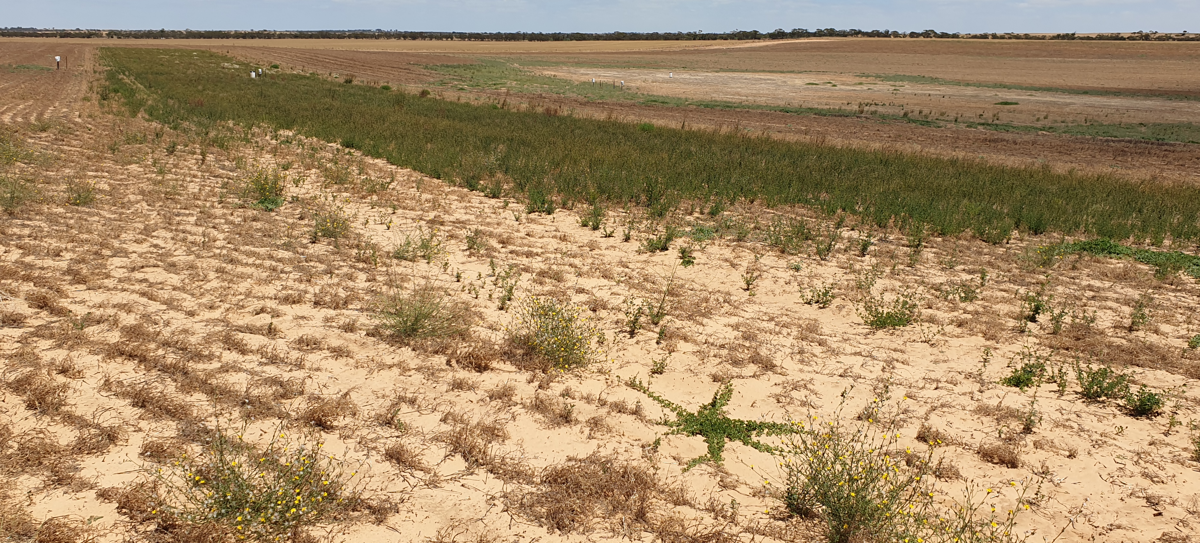Development Phase
Early Mild Phase
Water Salinity Level
High to Very High salinity
Key Comments
These sites can deteriorate to large bare saline scalds within a few years. However, as they have only recently formed due to a water table rise caused by fresh recharge water (high rainfall period), a swift high water use strategy is needed to stop this flow and return the highly saline perched water table to a level lower than it can affect topsoils and crop growth.

Discharge Zone Management

There is a high danger that these sites could deteriorate very quickly to a highly saline scald. It is recommended that the salt tolerant puccinellia and tall wheat grass be sown into this area to establish permanent cover and utilise water before it brings salt to accumulate to highly toxic levels at the surface.

This will buy some time to protect the site while the interception zone treatments establish and begin to take affect.
The planting of salt tolerant trees on or at the edges of these developing areas can intercept and utilise water to help lower and saline perched water table to a level limiting surface degradation impacts.
Ensure any tree plantations fit in line with existing machinery run lines to minimise trafficking inconveniences. Lucerne establishment on or closely around this discharge zone will be of little value here as the perched water table is too saline.

Interception Zone Management

Sow lucerne in a targeted strip of about 20-30m wide at least 20-30m up the sandy rise, where the lucerne roots can access and intercept water of lower salinity before it reaches the discharge zone. Maintaining this lucerne strip long term will be vital, even if cropped through the growing season.
If the water table is still found to be highly saline in this suggested mid-slope zone, then planting salt tolerant trees at the base of the sandy rise or around the boundary of this emerging seep may be the best option.

Recharge Zone Management

Any deep sand amelioration with ripping, spading, delving, claying and the mixing in of manures or other organic matter etc, resulting in higher water retention and plant water utilisation will have a positive impact on reducing recharge, but will not have as dramatic affect as the water interception achieved with deep rooted perennials.
If it works for your farming system and paddock and you get a season with favorable conditions, then establishing lucerne over a larger portion of the recharge zone will significantly increase the rate at which the perched water table dries up and ceases to be affected by high rainfall periods and events.

